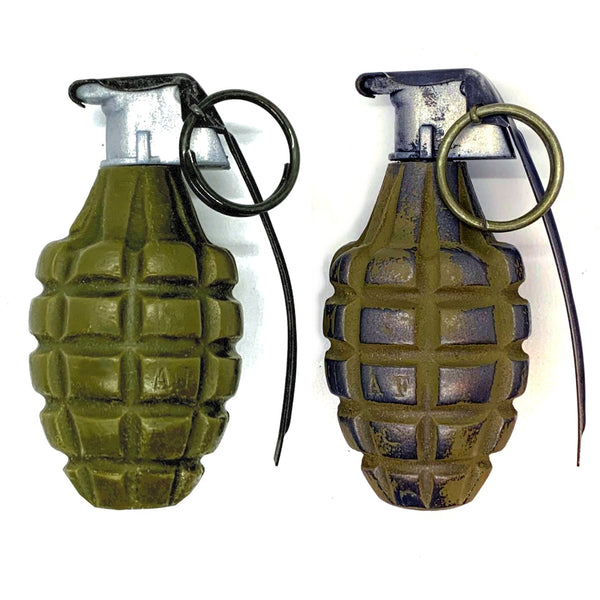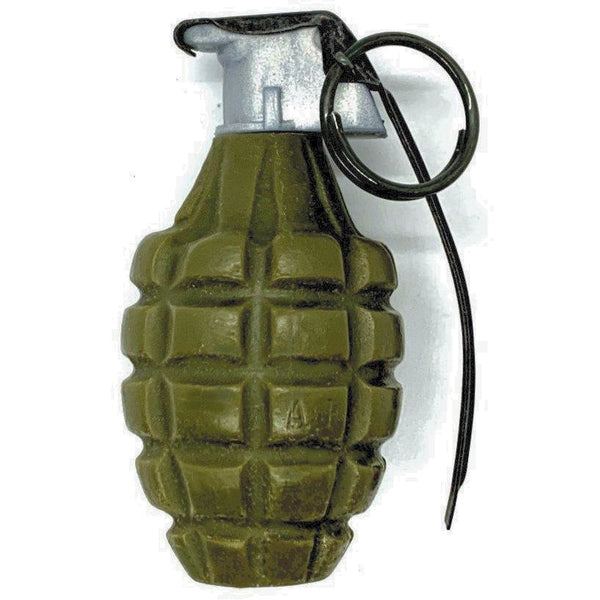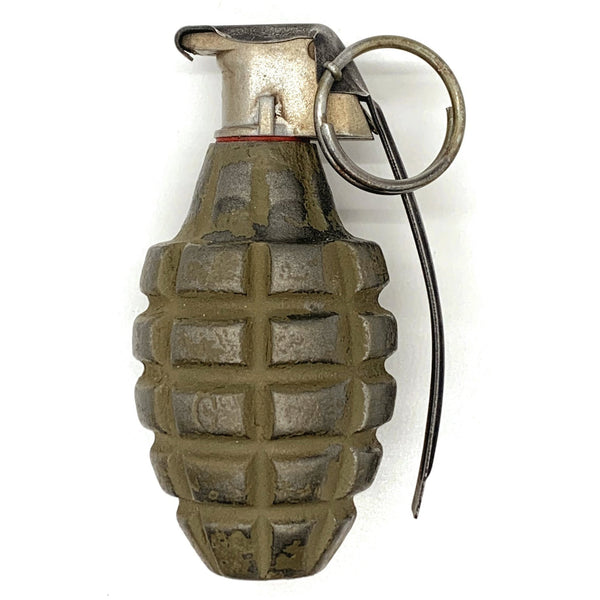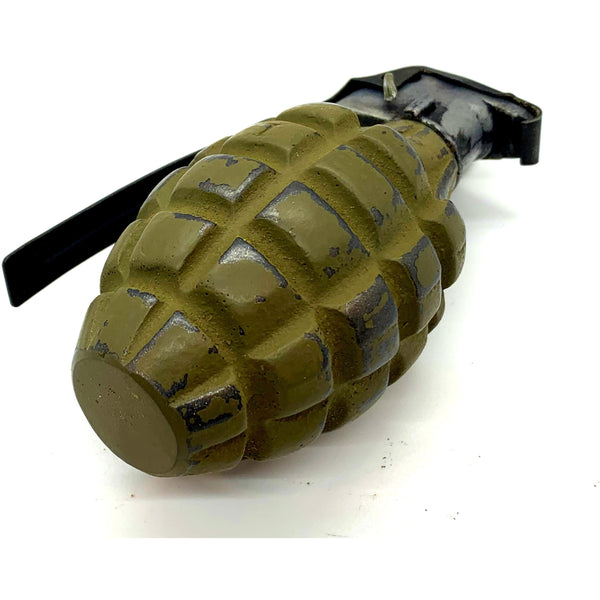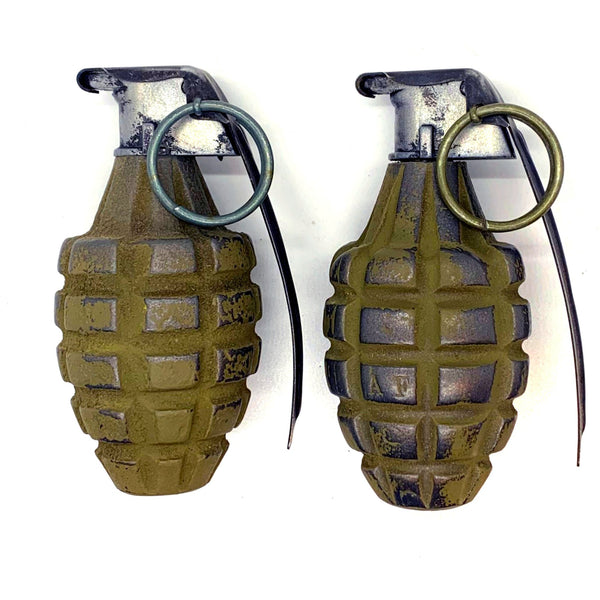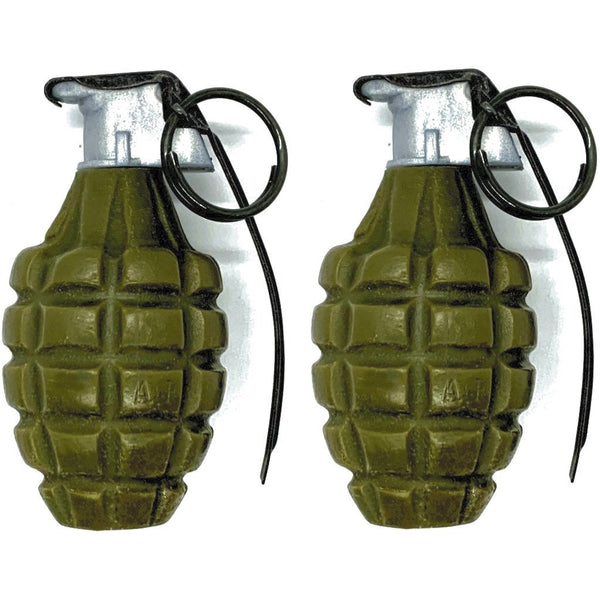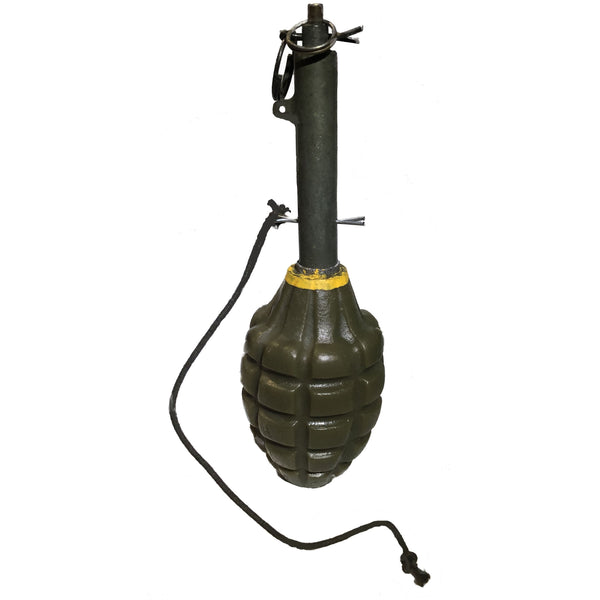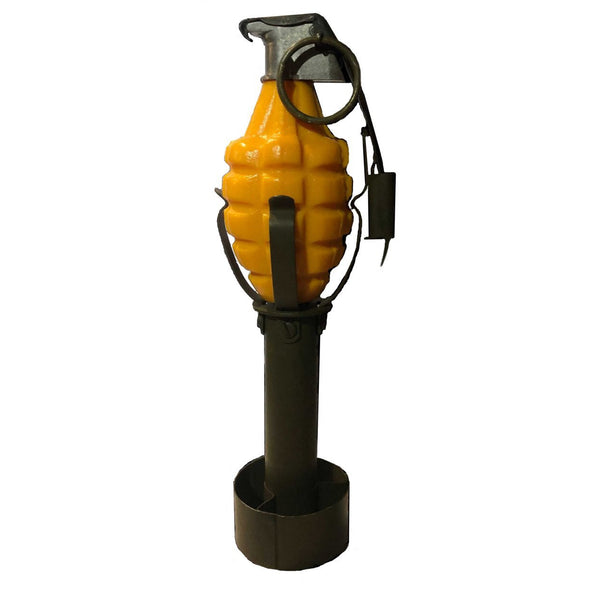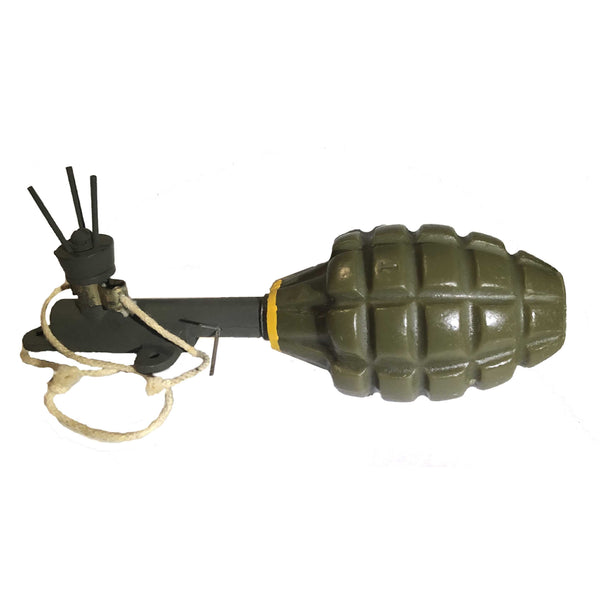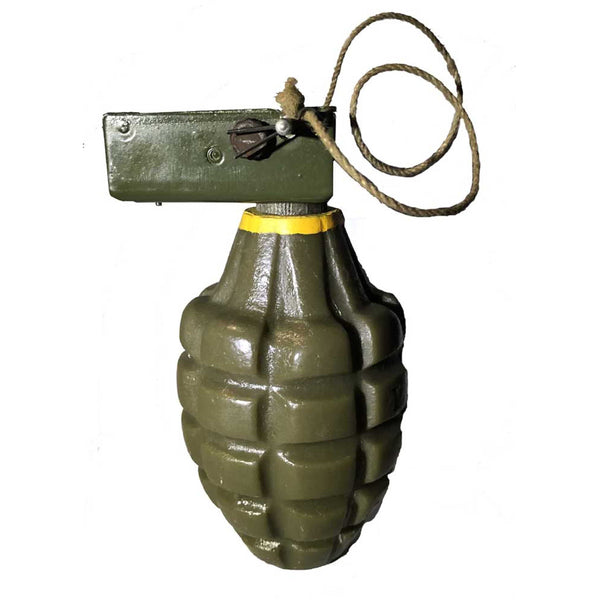WWII MK 2 Late War - Replica Hand Grenade
Product Description
This replica represents the late-war version of the WWII MK2 fragmentation hand grenade. Cast as a two-piece unit (separate body and fuse that can be permanently joined), the grenade is molded from solid colored resin plastic with a solid-bottom body matching late-production examples.
The WWII M10A2-style fuse is correctly modeled without the red washer or yellow stripe, reflecting the simplified late-war paint and marking standards. Each grenade is equipped with a reproduction WWII-style metal spoon and pull-ring pin. The fuse uses authentic 9/16" WWII threads, compatible with other reproduction fuses or detonators for display.
An optional “Aged” finish provides a lightly worn appearance for more realistic period presentation. The complete grenade weighs approximately 8 ounces and is designed for display use only — not for throwing, pyrotechnics, or combat reenactment. Suitable for museum collections, educational exhibits, uniform gear, or film and stage productions.
Technical details / specs
-
Construction: Two-piece (separate body and fuse) solid resin.
-
Bottom: Solid (late-war style).
-
Fuse: Reproduction M10A2-style with no washer or stripe.
-
Fuse threads: 9/16" WWII specification.
-
Finishes: Standard or optional Aged (weathered).
-
Hardware: Reproduction WWII-style metal spoon and pull-ring pin.
-
Weight: ~8 oz assembled.
-
Use: Inert prop — not for throwing or pyrotechnic use.
-
Applications: Museums, reenactors, film/theater props, collectors.
** Grenades and fuses are solid plastic resin and cannot be made into any functioning grenade.
**Shipping
- Please allow 10 - 14 business days for shipping
- Secure Checkout & Payment Options.
- Made in USA by Marshall's Arsenal
Historical Background
The Mk 2 hand grenade — commonly known as the “Pineapple Grenade” — was a fragmentation-type anti-personnel grenade first introduced by the U.S. military in 1918. It replaced the earlier and unreliable Mk 1 grenade of 1917, and was standardized as the Mk II in 1920. On April 2, 1945, it was officially re-designated as the Mk 2.
Its distinctive segmented cast-iron body, designed to aid fragmentation and grip, made it one of the most recognizable grenades ever produced by the United States. The Mk 2 served as the standard issue fragmentation grenade for American forces throughout World War II, and continued in widespread use during the Korean War and into the Vietnam War.
Over its long production life, variations in body casting and color markings appeared, reflecting changes in manufacturing methods and ordnance standards. The Mk 2 was gradually replaced by the M26 series beginning in the Korean War and later by the M33/M67 series, though large wartime stockpiles kept it in limited U.S. service through the 1950s.











